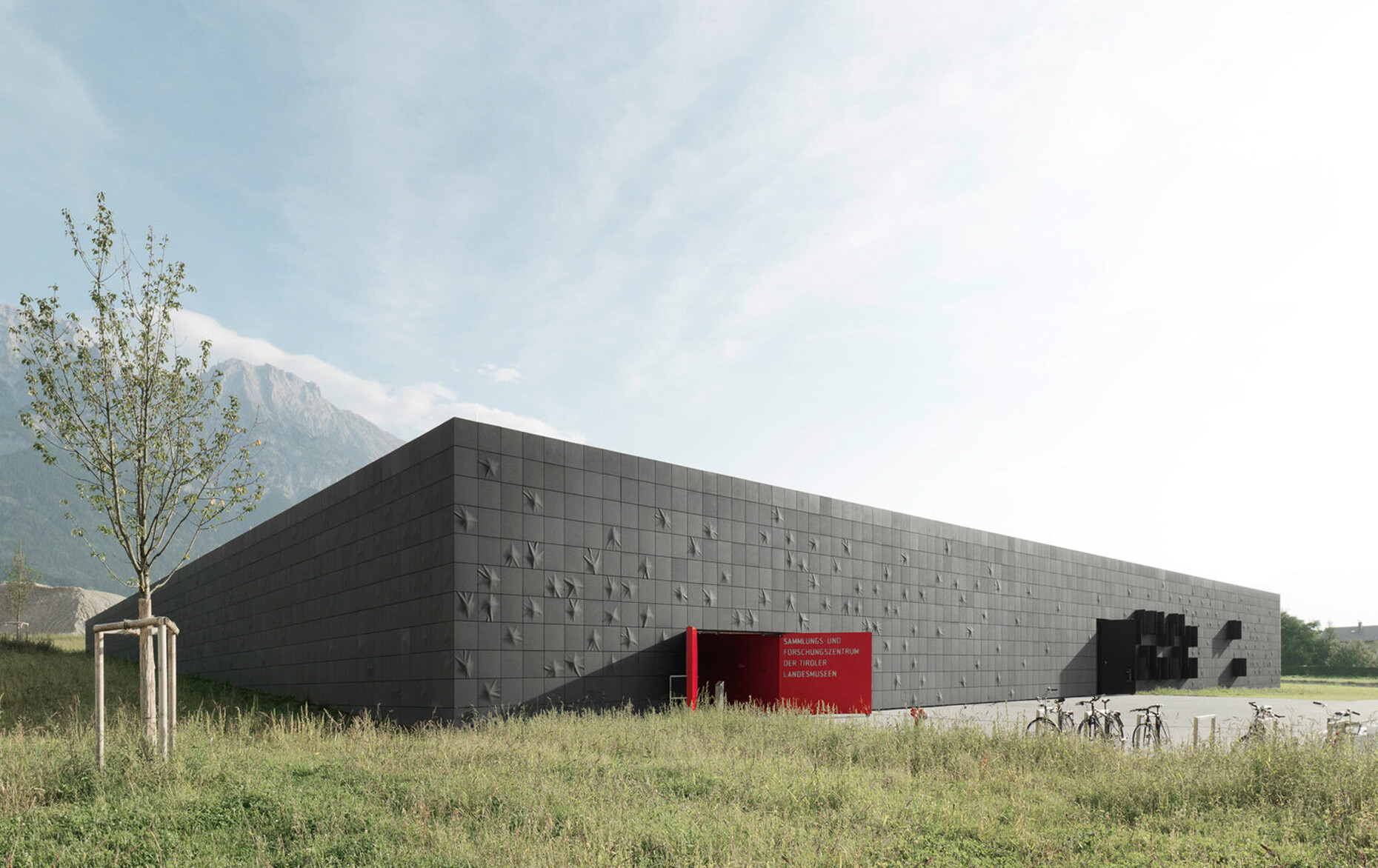A concrete treasure chest
Architecture studio Franz&Sue has designed an impressive monolith for the Tyrolean State Museum’s new research and collection center. The building at the foot of the Tyrolean Alps appears downright mysterious: No window or door punctuates the façade of the dark structure. Yet its closed nature is not solely due to an aesthetic decision made by the architects, but is in fact governed by the spatial requirements that needed to be met. After all, the building holds millions of pieces from the collection – including a mummy that is over 3,000 years old, hand axes from the Stone Age, and the string instruments of legendary Tyrolean violin maker Jakob Stainer. And all of these need to be protected from changes in temperature and daylight. To meet these criteria, Franz&Sue decided to bury a large part of the structure’s volume underground, as well as creating a square courtyard in the middle around which the workshops and other work spaces are grouped, and through which they are also lit. This atrium simultaneously serves as a contemplative space where staff members of the research and collection center come together.
The fact that the building’s closed-off exterior shell appears neither forbidding nor monotonous is owing to its elaborate execution. Here the architects decided to use “Fibre C” glass-fiber-reinforced concrete elements by Rieder, which are only 13 millimeters thick and very light. “The material used in the façade references the themes of preservation and conservation. At the same time the look and feel of the concrete creates a certain aesthetic pull,” as Erwin Stättner of Franz&Sue explained. “We wanted to link old and new in the elaborate design of the building’s shell and make them accessible. After all, one of the oldest objects in the collection is a hand axe from the seventh to eighth century BCE. It is an imprint of this object that can be found repeated in the concrete panels.”
In order to create this imprint Rieder developed a new process together with the architects, one that combines the industrial manufacturing process of the glass-fiber-reinforced concrete elements with a craft component. The result was 719 unique concrete elements measuring 60 by 60 centimeters each, which now draw a fictitious treasure map on the impressive monolith. Franz&Sue was not only convinced by the cooperation with Rieder – a company that has in recent years successfully established itself as a partner for complex specialist façade solutions – but also by the longevity and sustainability of the material: The glass-fiber-reinforced concrete by Rieder needs to be neither sanded nor painted in the next 50 years, and is also non-flammable. (as)






